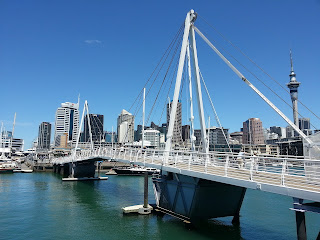The United Kingdom has one of the best healthcare systems in the world because of the National Health Service (NHS). The NHS started in 1948 and provides free healthcare for everyone when they need it. The NHS ensures that everyone can get the medical help they need without having to pay when they receive treatment.
Whether you live in the UK, are from another country, or are
just visiting, it’s important to understand how the NHS works. Knowing the
basics will help you get the care you need easily, whether it’s for an
emergency or finding a local doctor.
Today, you’ll learn everything you need to know about
healthcare in the UK in a simple way. This information will help you feel
prepared for any health issue, whether you’re just visiting or moving to the UK
for good. With this important knowledge, you’ll be able to manage your health
in the UK like a pro and never feel unsure about your care.
The centre of UK medical care
The UK's healthcare system is run by the National Health
Service (NHS), which provides essential health services to everyone. The NHS
makes sure healthcare is free when you need it and is mostly paid for by taxes.
This means you don’t need to pay for regular checkups or emergency care. If you
have a health problem, your first visit is usually to a general practitioner
(GP). They help by diagnosing, treating, and referring you to specialists if
needed.
The first thing you need to do to use NHS services is to
register with a local general practitioner (GP). You can do this in person or
online, and it's best to choose a GP near your home. After you register, you
can book regular checkups, get prescriptions, and receive care to stay healthy.
Keep in mind that healthcare can be a little different
depending on whether you're in England, Scotland, Wales, or Northern Ireland.
However, the main parts of the NHS are the same across the UK, so it's easy to
use no matter where you are.
Obtaining medical services
In the UK, handling medical emergencies is easy. If you're
facing a serious emergency, just call 999, and an ambulance will take you to
Accident & Emergency (A&E) for quick treatment. For less serious health
issues, you can visit an urgent care clinic. Knowing the difference between
these options will help you get the right care quickly during an emergency.
To get non-urgent medical care, the first step is to make an
appointment with your general practitioner (GP). Your GP can help with things
like prescriptions, consultations, or referring you to a specialist. You can
pick up prescriptions at your local pharmacy, and if you need extra care, your
GP will send you to a specialist.
The UK
also has mental health services for emotional support, and dentists and
opticians for regular checkups. If you have minor illnesses or need advice on
over-the-counter medicine, pharmacies are a good place to go. For tourists or
short-term visitors, healthcare can be accessed through emergency services or
by paying for certain treatments, depending on agreements between your country
and the UK.
What you should know about UK health insurance
In the UK, private health insurance works alongside the NHS
to offer extra benefits that the NHS may not provide. The NHS provides free
care when you need it, but private health insurance can offer faster treatment,
allow you to choose your doctor, and cover extra services, such as quicker
surgeries or private hospital rooms. If you prefer to have more control over
your care or avoid long waiting times, private insurance can be a good option.
Private health insurance does cost money. The price depends
on how much coverage you need, your age, and your health. Some people find the
NHS is enough for them, while others think the extra cost is worth it for
better care.
If you're a visitor, expat, or international student, there
are insurance options available, but it's important to think about the costs.
International students often need private insurance or have to pay the NHS fee.
Visitors and expats should compare plans to make sure they have enough coverage
for both regular care and emergencies.
How to handle UK healthcare like an expert
Once you understand the basics, using UK healthcare is
easier than you think. Whether you need emergency care or a visit to the
doctor, the NHS makes sure everyone, both locals and visitors, can get free,
good-quality treatment.
If you know how to register with a doctor, understand your
rights to treatment, and consider private insurance if needed, you will be in
control of your healthcare. The system is designed to be simple and works well,
no matter how long you're staying in the UK.
Pick the best programme at Global Visa Support to help you
move to the UK easily: http://globalvisasupport.com/uk.html.
Get in touch with the Global Visa Support team today, and
we’ll help make your move to the UK simple and stress-free: http://www.globalvisasupport.com/contacts.html.










